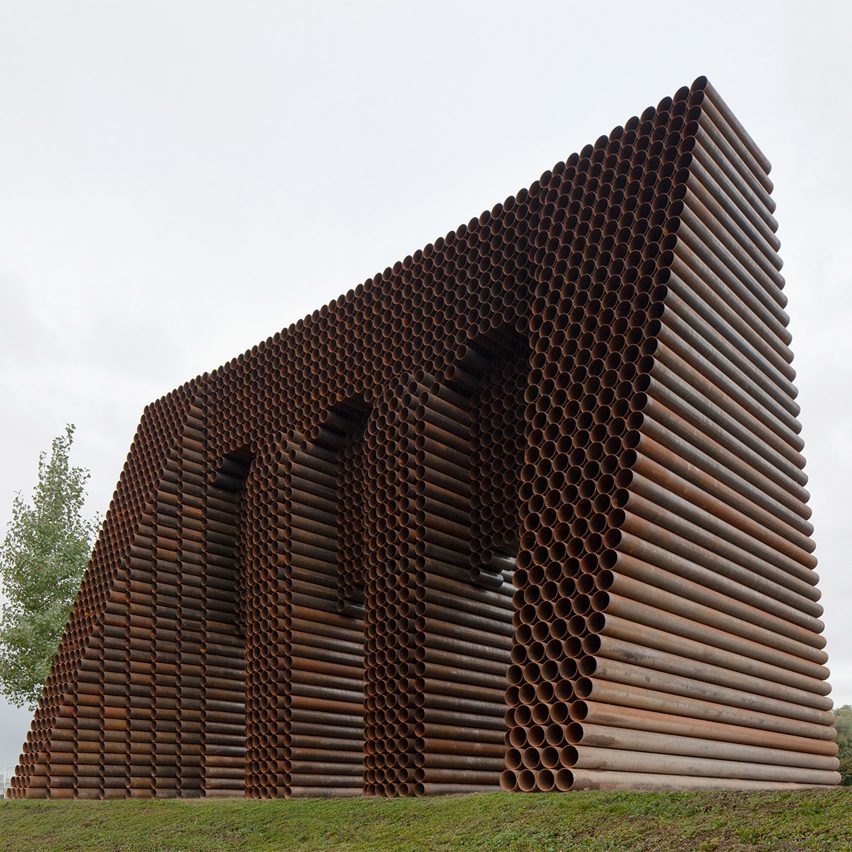
Hundreds of stacked, weathered steel tubes form this arched monument in Laagraven Park, Utrecht, designed by architecture and art studio Gijs Van Vaerenbergh.
The Waterline Monument was created to celebrate the New Dutch Waterline being awarded UNESCO World Heritage Site status in 2021.
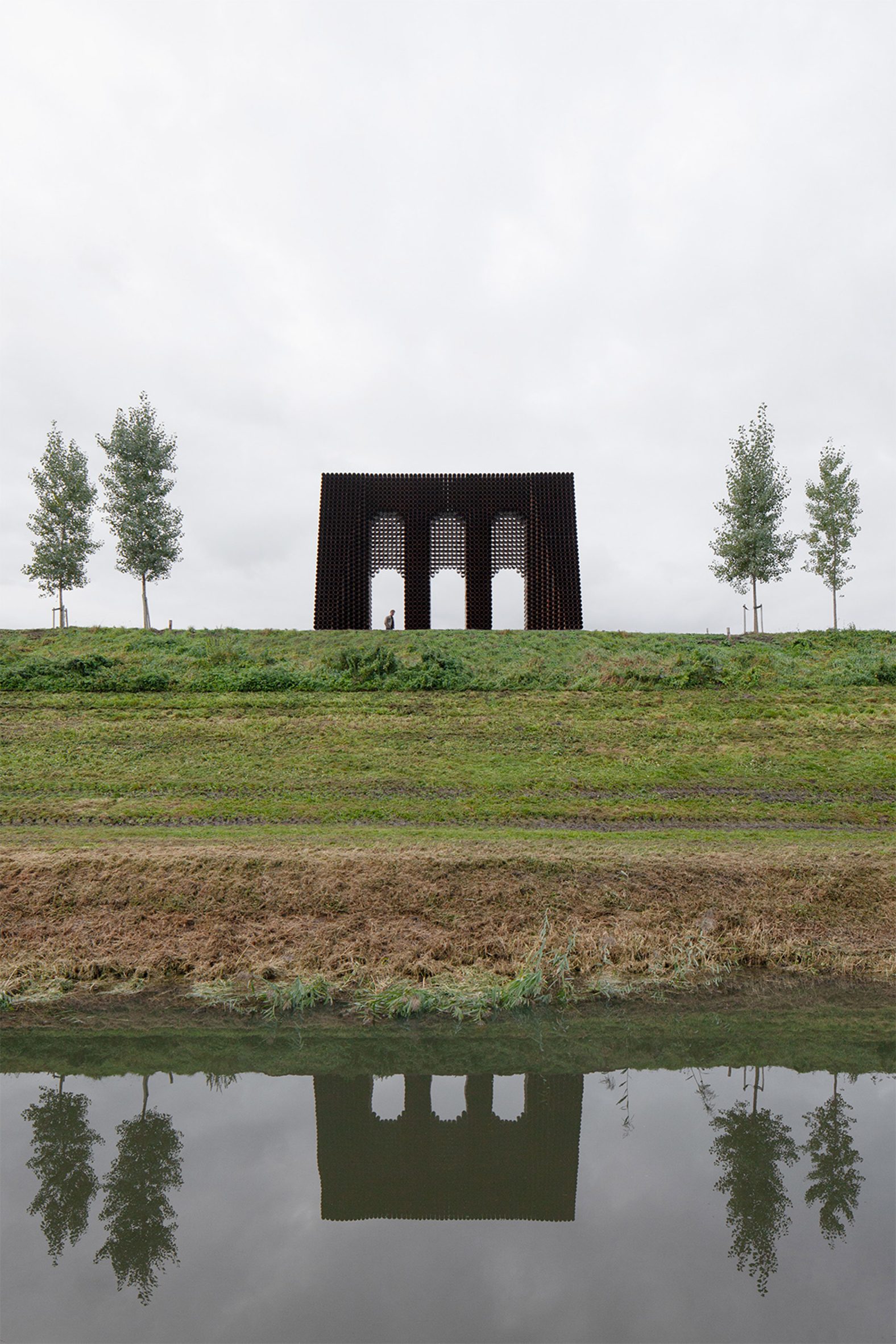
Operational from 1815 to 1940, the New Dutch Waterline was a defensive system of canals, forts and bunkers that enabled areas of land to be strategically flooded in order to make them inaccessible in the event of an invasion.
Stretching from Muiden, outside Amsterdam, down to what is now the Biesbosch National park near Rotterdam, the area has since become a popular route for cycling and hiking, with many of its forts, bunkers and locks still intact.
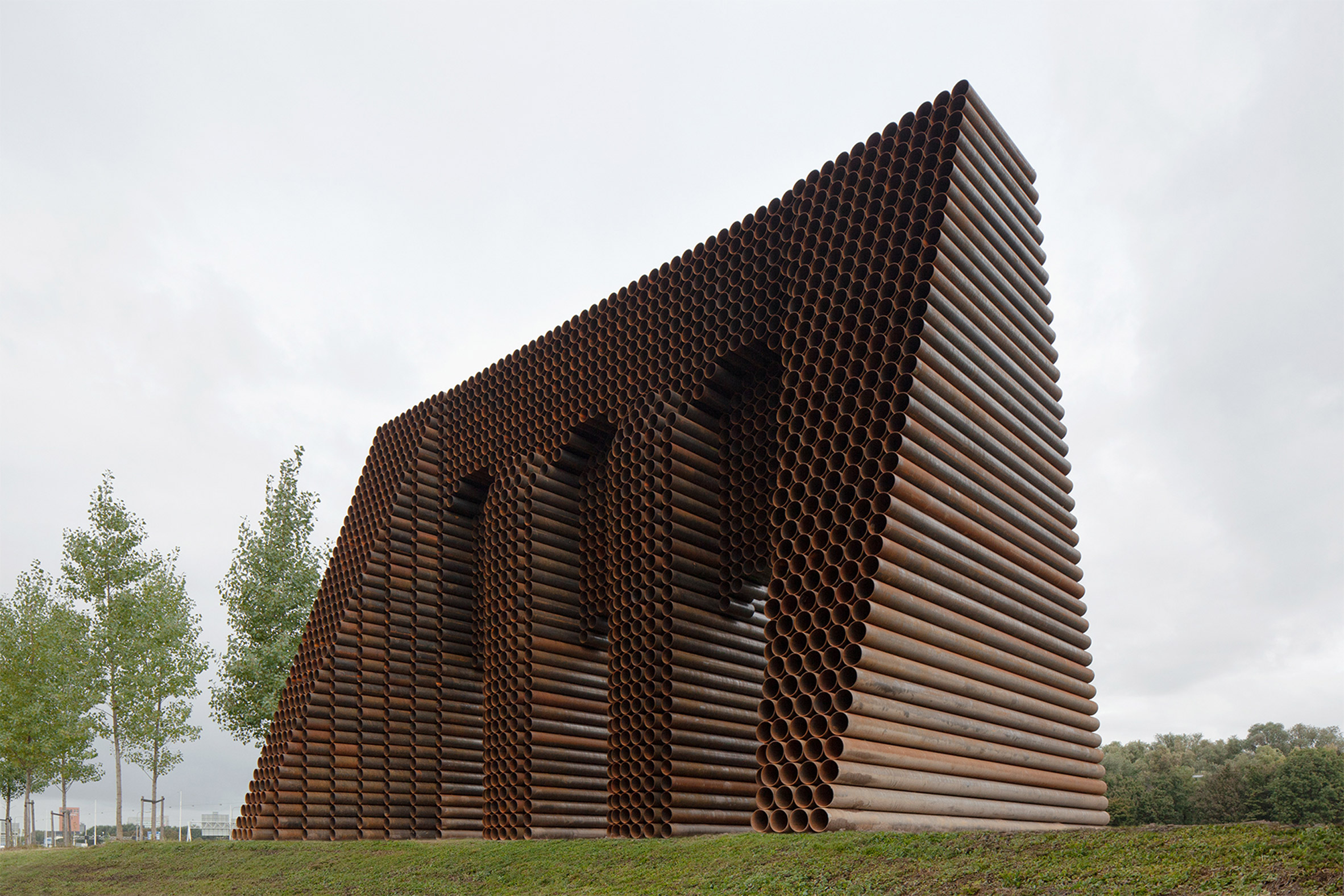
Gijs Van Vaerenbergh saw these historic structures as being crucial to the “collective memory” of the area. For the design of the monument, the studio abstracted the form of one of the many locks along the route using a welded stack of metal tubes.
“By presenting the lock in its essential form, that is, three arched openings at right angles to the viewing direction, the image is shifted from that of a lock to that of an (entrance) gate,” said the studio.
“As the sculpture is situated on top of the slope, it is also reminiscent of a triumphal arch. The play with the recognisability of these different forms imbues the work with ambiguous meanings,” it continued.
From a distance, the monument is designed to appear as a solid structure, similar to many of others dotted along the route of the New Dutch Waterline.
When approached, however, the different lengths of tube and their hollow forms cause this initially solid appearance to “dissolve” as visitors move around it.
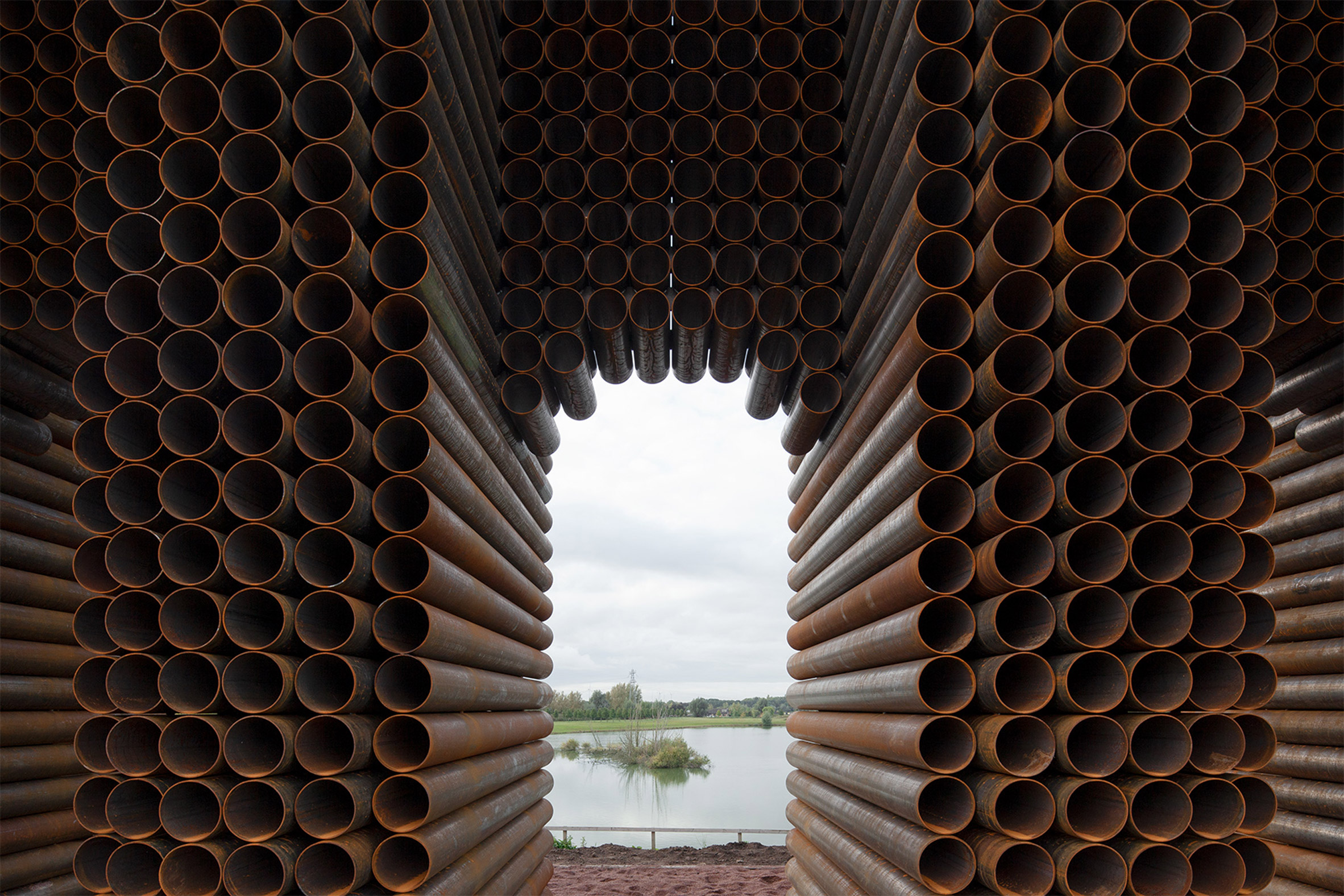
“The work always presents itself as a solid stack of tubes, except when visitors pass by it. The gaze then not only passes through the arches of the gate, but also through the tubes themselves,” said the studio.
“For a brief moment, the image dissolves; the artwork becomes partially transparent. This creates a special, elusive moment of wonder and a new perception of spatiality,” it continued.
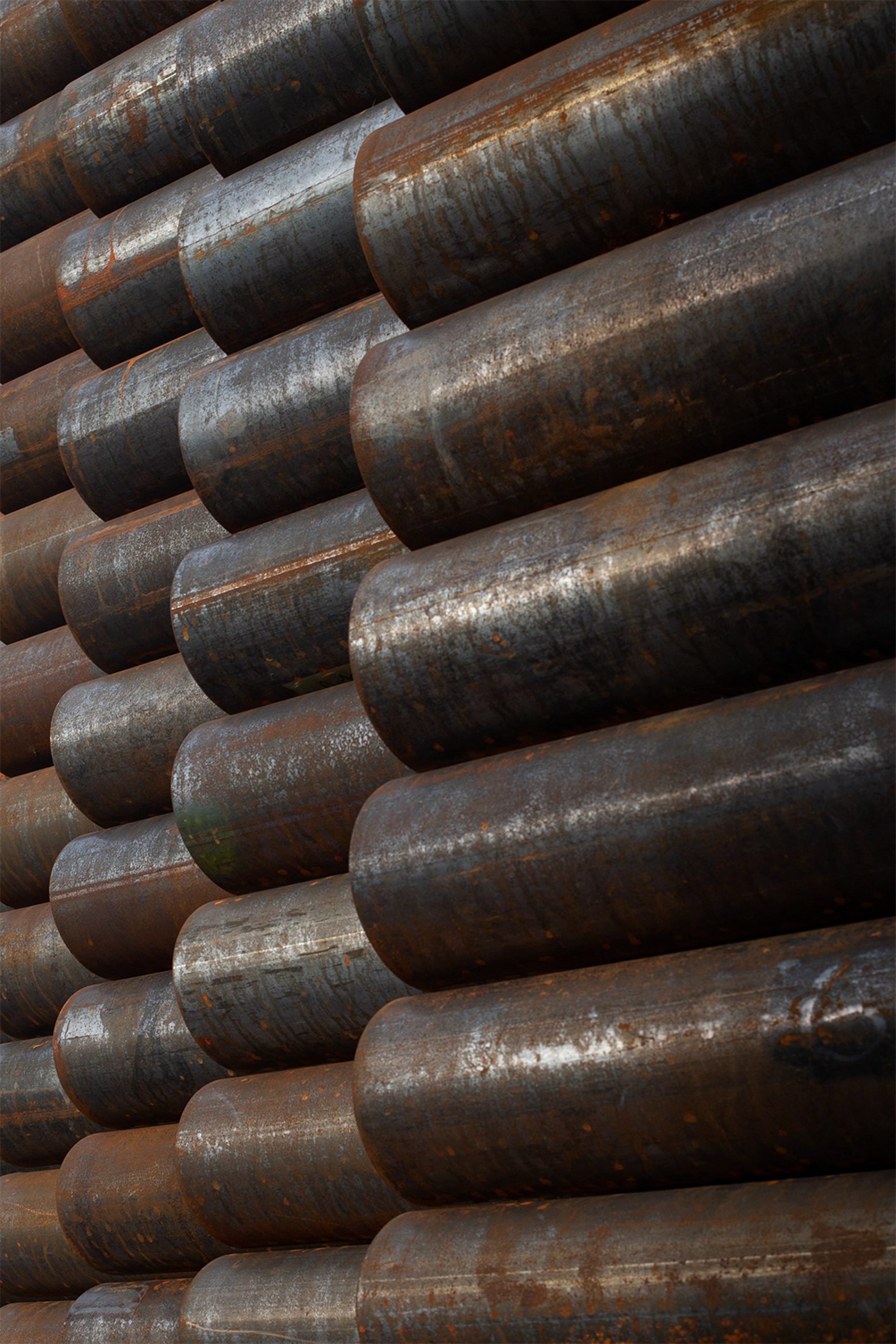
The structures along the New Dutch Waterline have been the site of many previous architectural interventions.
Belgian studio B-ILD converted a former bunker into a tiny holiday home, and RAAAF and Atelier de Lyon created a sculptural visitor attraction by slicing a bunker down its middle to create a route through its interior.
The photography is by Johnny Umans.
The post Stacked steel tubes form Waterline Monument by Gijs Van Vaerenbergh appeared first on Dezeen.
